RECOIL OFFGRID Gear Trekking Poles Aren’t Just for Hiking Anymore
In This Article
When we were young, spry, and cocky, we used to laugh at the folks walking with what looked to be ski poles in city parks and on easy hiking trails. “Did you take a wrong turn off the chairlift?” we would ask, sarcastically. Now that we’re a little older, a bit banged up, and a lot wiser, we put ego aside and finally tried trekking poles for ourselves. Needless to say, we want to slap our younger selves upside the head.
Trekking poles aren’t a sign of weakness. They’re essential for some outdoor adventures and can actually serve as multifunctional tools in a variety of SHTF scenarios. Don’t believe us? Read on.
Trekking poles are more than just tricked-out crutches or bastardized ski poles. They vastly increase our capabilities while on a trail or heading off the grid. Below are just some of the benefits of these tools.

Balancing Act: Mother Nature shows us that the more legs an animal has, the more stable it will be. As bipeds, humans do alright on flat surfaces. But what if you’re navigating up a steep hiking trail? How about escaping over earthquake-induced rubble? Or searching for victims in a tornado-ravaged home? Trekking poles can make a huge difference. They provide better footing and help maintain balance on harsh terrain. And they especially shine when you need to cross streams or patches of ice and snow.
Self-Defense: Imagine it’s a long-term survival scenario. You’re out on a supply run when you’re ambushed by a crew of raiders with knives — and you don’t have a firearm. Or you bugged out to the backcountry and encounter a mountain lion. If you ventured out with trekking poles, you’re already armed with a pretty decent improvised weapon. Most poles are about 4 feet long and made of solid materials like aluminum, carbon fiber, or good old-fashioned wood — essentially, they’re short staffs that can be used for striking and deflecting.
When held like a spear, a pole can deliver a powerful thrust — made even more devastating if it has a steel tip. You can also swing them to block attacks, launch counterstrikes, or ward off wild animals. Or, you can grip the two ends of a pole and slam the shaft forward like a crosschecking hockey player. And if you have some combatives or martial arts training, you can also use them to apply joint locks, cinch in submission holds, or sweep the leg like Cobra Kai. (Note: some poles can snap upon impact if they’re not solidly constructed.)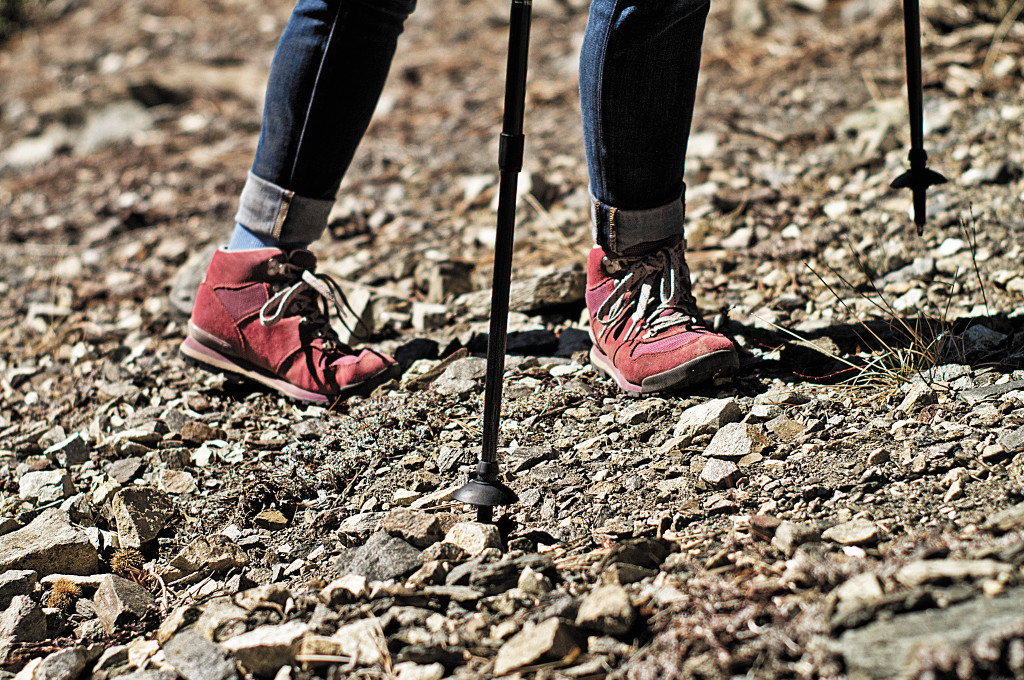
Quad Power: When dual-wielding these tools, we gain two thin legs to help not only propel us forward, but also upward if we’re climbing elevation. Trekking poles can aid your locomotion by digging into the terrain and letting you pull yourself forward rather than just relying on leg strength.
Shock Absorption: Conversely, when traveling downhill you can lean part of your weight on the poles, easing the impact on your ankles, knees, and back.
Arm Extension: Trekking poles help you get your Inspector Gadget on, giving you several feet of extra reach. Use them to check the depth of a water hazard, remove debris from the road, clear brush out of your path, or knock down fruit and nuts from high tree branches.
Shelter Structure: Trekking poles are quite rigid despite being lightweight. That makes them useful in other, MacGyver-like ways. For example, if you’ve broken a femur or shattered your knee whilst bouldering hours away from paramedics, one pole can be used as a makeshift leg splint while the other becomes your crutch. What if you’ve gotten lost in the woods? The poles can serve as rafters or columns for an impromptu shelter so you can survive a chilly night.
Cargo Hauling: Hardcore backpackers have long known that trekking poles can help you carry your cargo for longer periods of time. Why? Because when you use these tools, you’re recruiting muscles in your arms, shoulders, back, and core. This alleviates some of the strain normally endured by just your leg and butt muscles. This in turn helps to ward off lower-body fatigue and boost morale, allowing you to focus on your target of reaching a peak or evading danger.
Dig In: Most trekking poles come with steel tips, which can double as picks for digging into hard soil or icy snow. This can be key for various survival situations — making a fire pit, building a snow cave, or harvesting roots, just to name a few.
Back in the day, walking sticks were just chopped-down tree branches. Nowadays, space-age engineering is combined with state-of-the-art technology to craft stellar equipment. They come in all shapes, sizes, and materials. Some are long and used as a single staff while others are adjustable and are used in pairs. But, generally speaking, trekking poles consist of the following basic parts:
Grip: This is where you make contact with the pole, so the handle must be comfortable in your palm. They’re made of a variety of materials, each with their own pros and cons. Rubber grips repel moisture and absorb shock, but can slip out of your hands and cause blisters due to the constant rubbing. Foam handles are the softest, but can get slimy in wet conditions. Cork grips are the lightest, can absorb sweat, and will conform to your palm — but they’re not as durable. Note: If you’ve never used trekking poles before, consider wearing gloves to prevent developing bloody blisters.
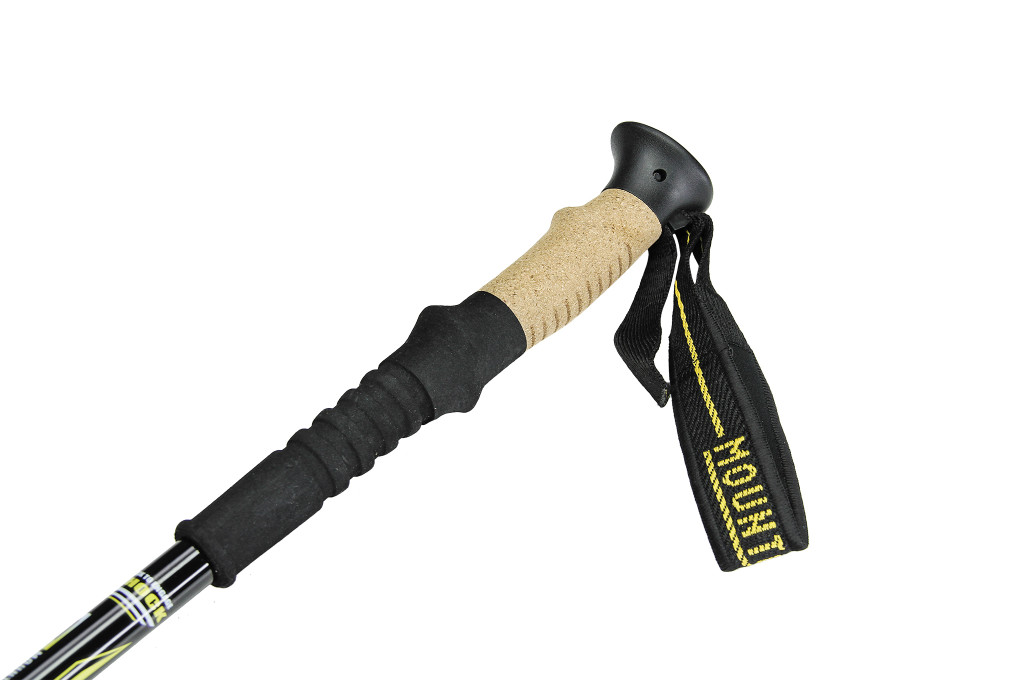
The Carbonlite Pro from Mountainsmith features molded cork grips on an EVA foam handle with adjustable neoprene wrist...
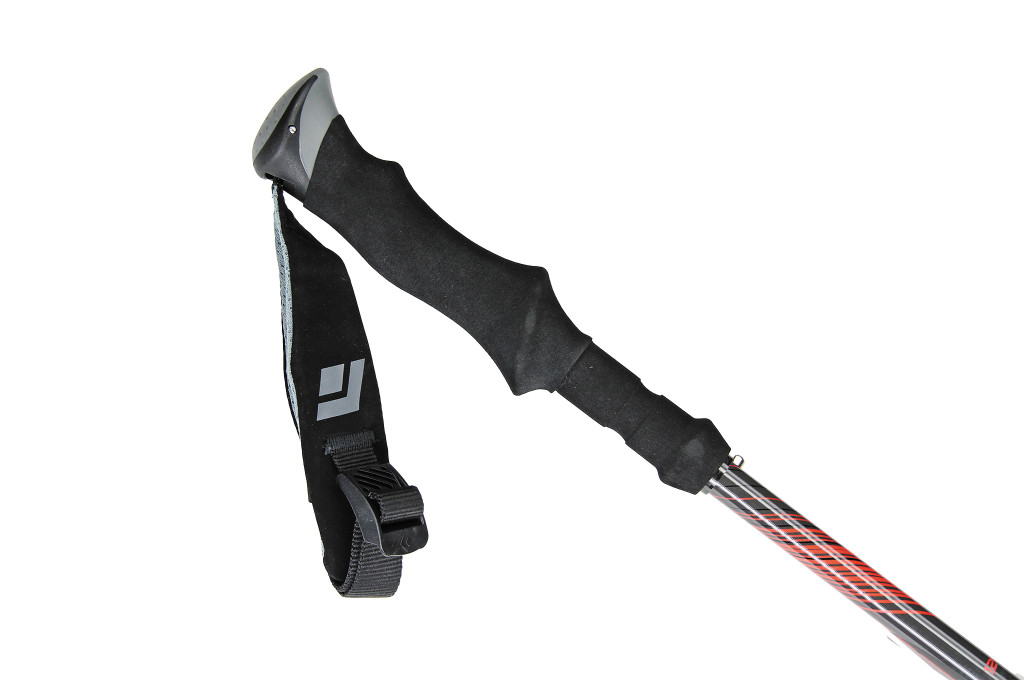
Made of EVA foam, the grip on the Black Diamond Ultra Mountain Carbon is soft and cushiony. Comes with a...
Basket: These rings near the bottom help keep your pole from sinking too far into soft terrain. Larger baskets (3 inches in diameter or bigger) are used in mud or snow, while smaller ones are better for wooded areas so they don’t get caught up in underbrush.
Shaft: Most are made of either aluminum or carbon fiber. Both are lightweight and sturdy. The former is usually stronger and cheaper and will bend, but not usually break, when subjected to intense pressure. Carbon fiber is quite strong in its own right while being lighter and reducing more vibration. The catch? It’s more expensive and can splinter under high stress.
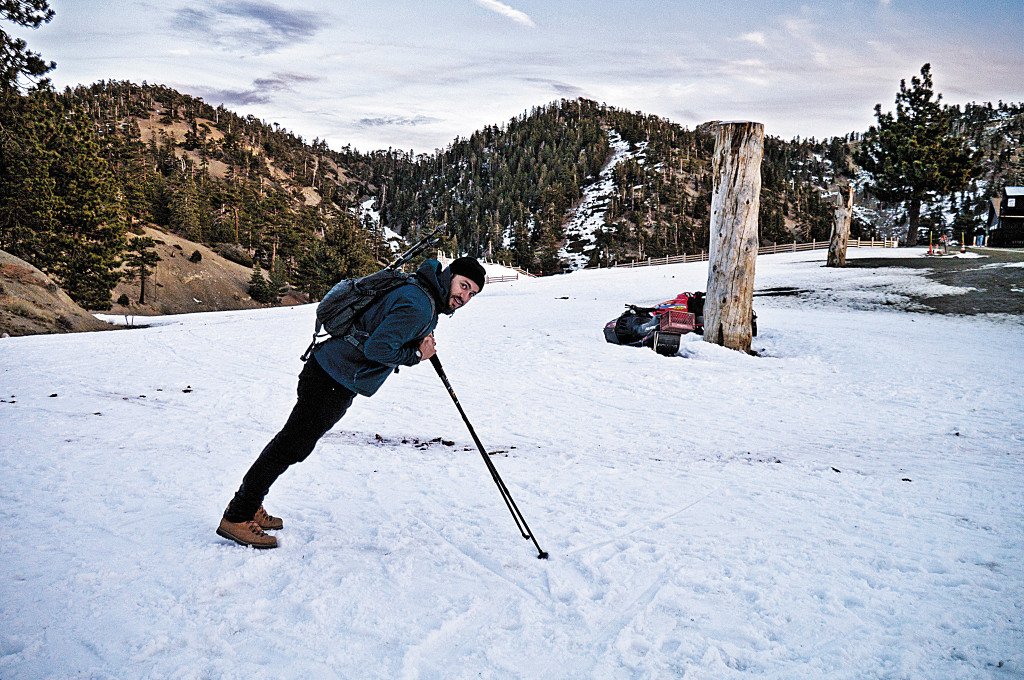
Though considered a budget model, the Twist Lock Carbon Fiber Trekking Poles from Cascade Mountain Tech can easily...
Tip: This component is what makes contact with the terrain and commonly made of steel or carbide. You can buy interchangeable rubber tips (if they’re not already included) for use on rocks and other less forgiving surfaces.
Trekking poles come in a variety of styles, each one better suited for certain environments than others. Which type you buy will also depend on your body (height and arm length), fitness level (athletic or sedentary?), and general health (any knee or hip injuries?). Though there can be overlap, trekking poles fall generally into the following categories:
Standard: These one-piece poles offer straight-forward performance. They’re considered the strongest, safest, and most durable because there are fewer moving parts.
Two-Section: These poles feature an adjustment mechanism (usually a lever-lock or a twist-lock) that lets you customize the length not just for your height, but also for the specific terrain; the pole should be longer when going downhill and shorter going up.
Three-Section: This type features two locks for greater customization. Plus, when fully collapsed they’re easier to transport. You can leave them in your car trunk, throw them into a large bug-out bag, or strap them to your backpack’s side pocket.
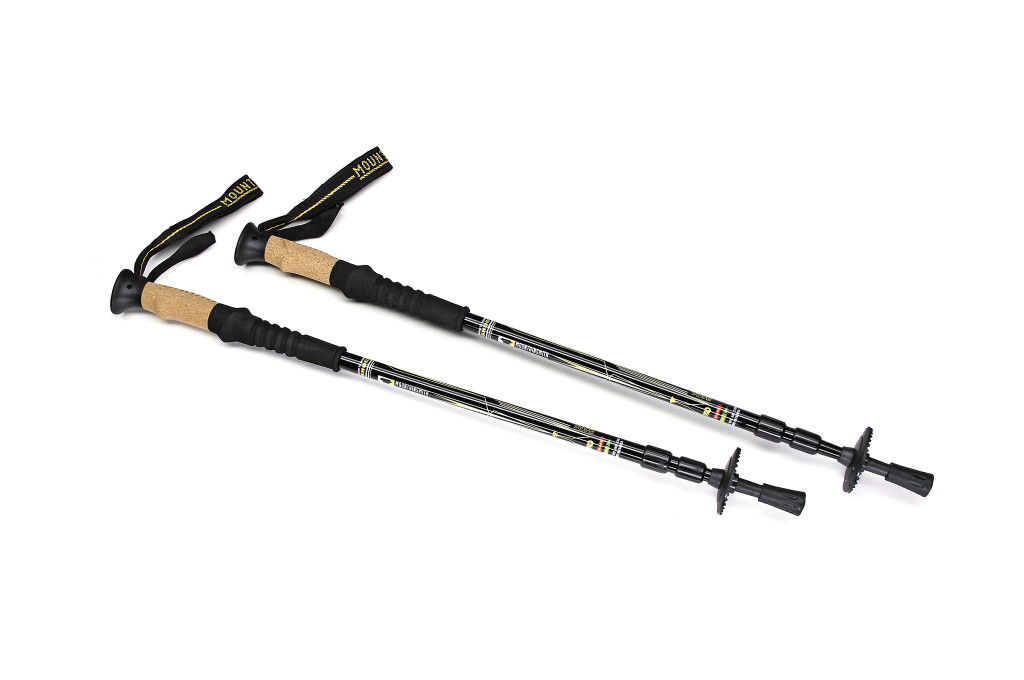
Both the Carbonlite Pro and the Rhyolite poles feature Mountainsmith's spring-loaded, anti-shock system....
Anti-Shock: Similar to a car’s shocks, these poles have internal springs that absorb impacts when heading downhill or landing on harder surfaces. These are great if you have weak ankles, knees, or hips. But be warned: they’re usually heavier, more expensive, and less stable.
At first glance, trekking poles seem like they belong only on a ski resort or in the hands of AARP members. But once you use them for the first time, you’ll immediately recognize the benefits of these simple yet effective walking tools. From increasing stability and alleviating impact on joints to boosting cargo hauling and aiding locomotion during uphill climbs, trekking poles offer a long list of benefits.
But in a disaster, they could possibly offer life-saving functionality, too. Use them as improvised weapons or tent/shelter poles. Let them function as extended limbs to move brush, debris, and hazards out of your way. They’re also a lot less conspicuous to carry than an axe or 12-gauge shotgun. Sturdy, lightweight, and reliable, trekking poles can serve as invaluable tools — whether you’re facing dire circumstances off-grid or just heading for a leisurely hike.
Most trekking poles are adjustable to accommodate for various terrains and elevations. Here’s a brief look at how to adjust your poles to adapt to your given environment.
Flat Ground
Your pole should be long enough so that when it touches the ground, your elbow is bent at a 90-degree angle.
Uphill
Shorten your poles slightly so that you can maintain a 90-degree bend in your elbows, making it easier to pull yourself up.
Downhill
Lengthen the poles to soften the impact of landings and provide stability.
Traversing Uneven Terrain
Maintain the 90-degree bend in both arms by lengthening the pole that’s downhill while shortening the pole that’s uphill, or “choke up” on the grip if your pole has an extended handle (as shown).
Sources
Black Diamond > www.blackdiamondequipment.com
Cascade Mountain Tech > www.cascademountaintech.com
Mountainsmith > www.mountainsmith.com
 STAY SAFE: Download a Free copy of the OFFGRID Outbreak Issue
STAY SAFE: Download a Free copy of the OFFGRID Outbreak Issue
No Comments